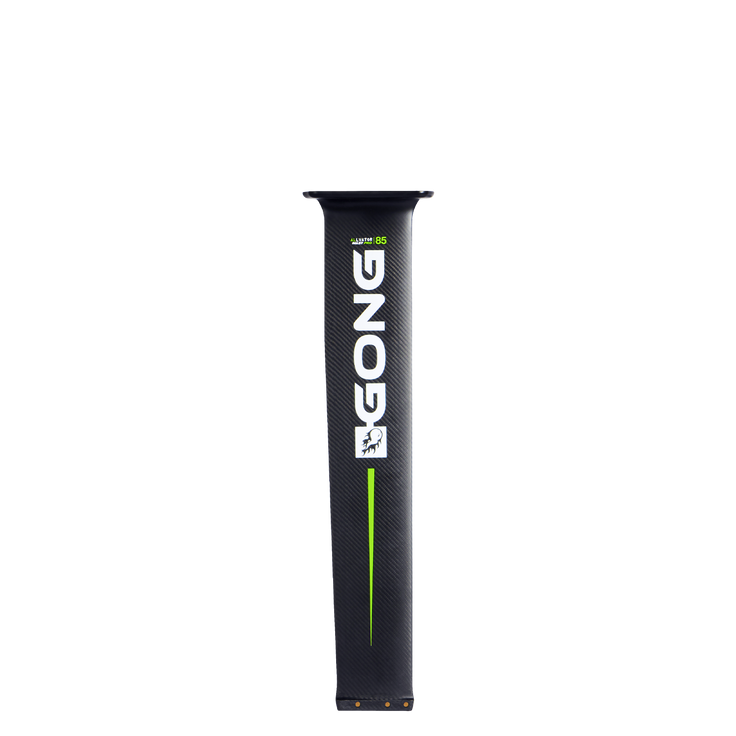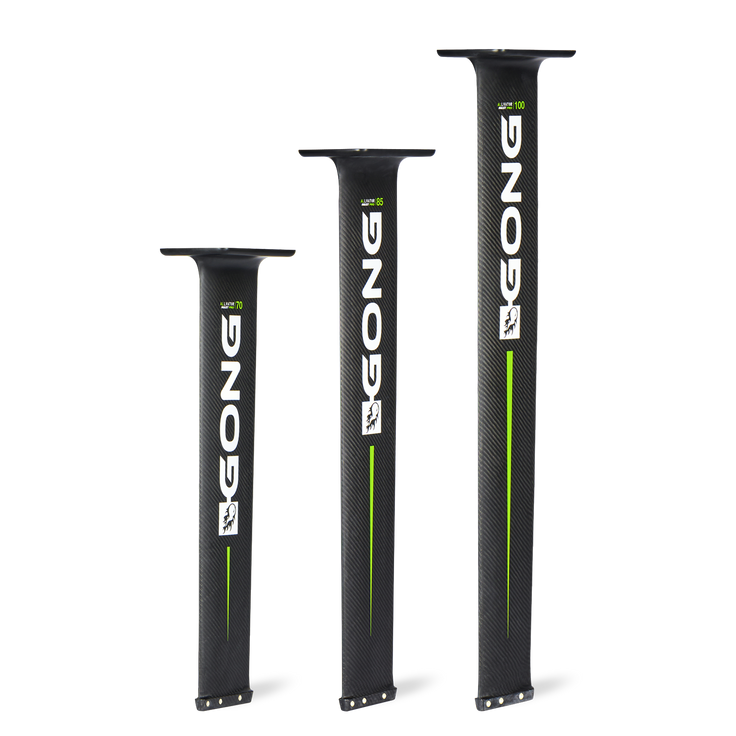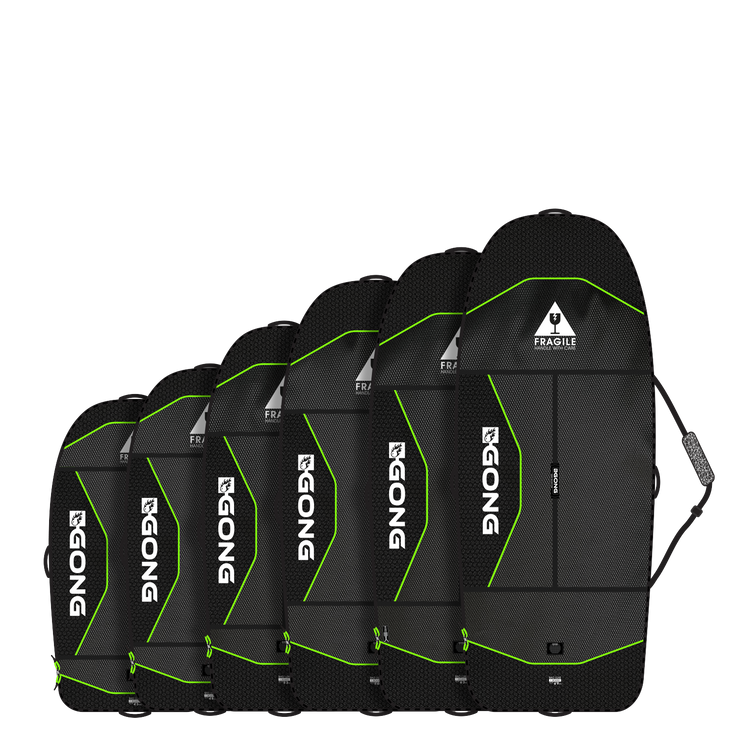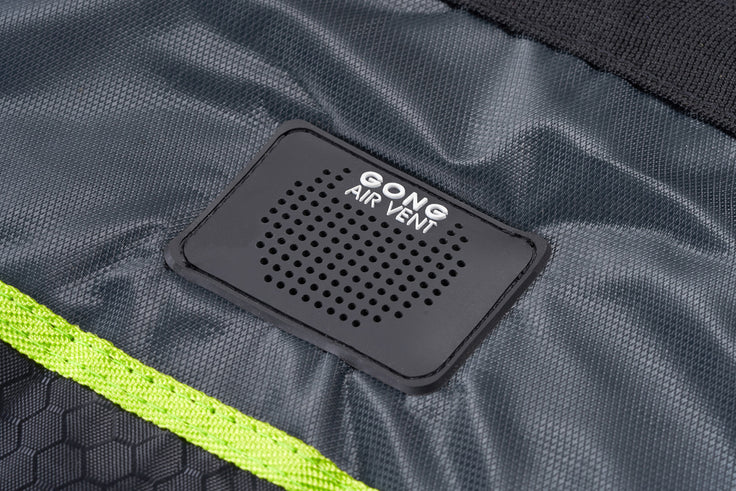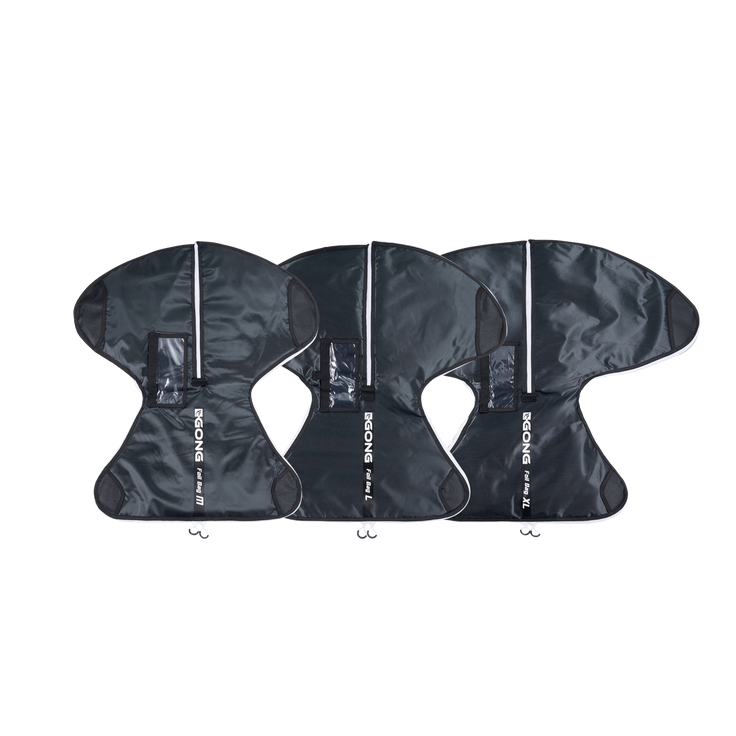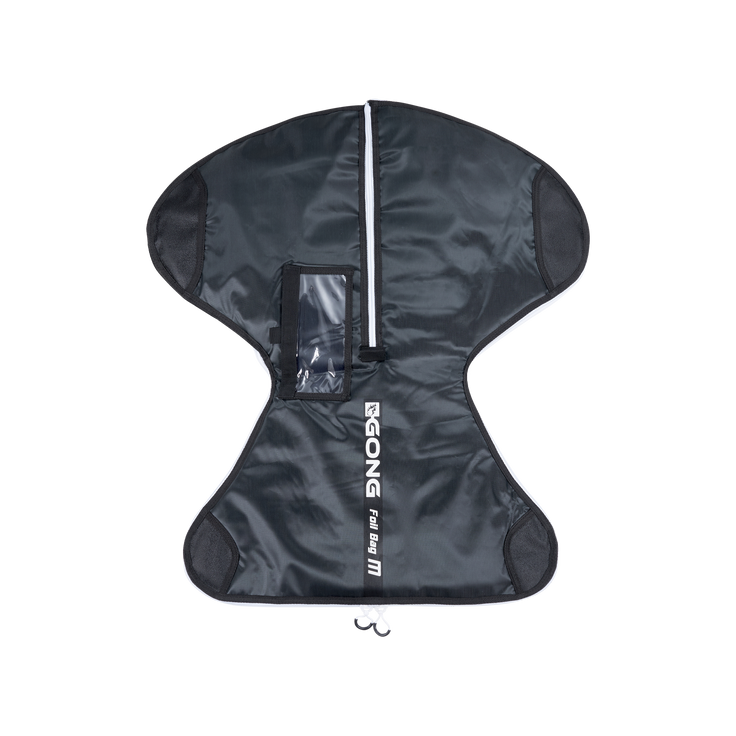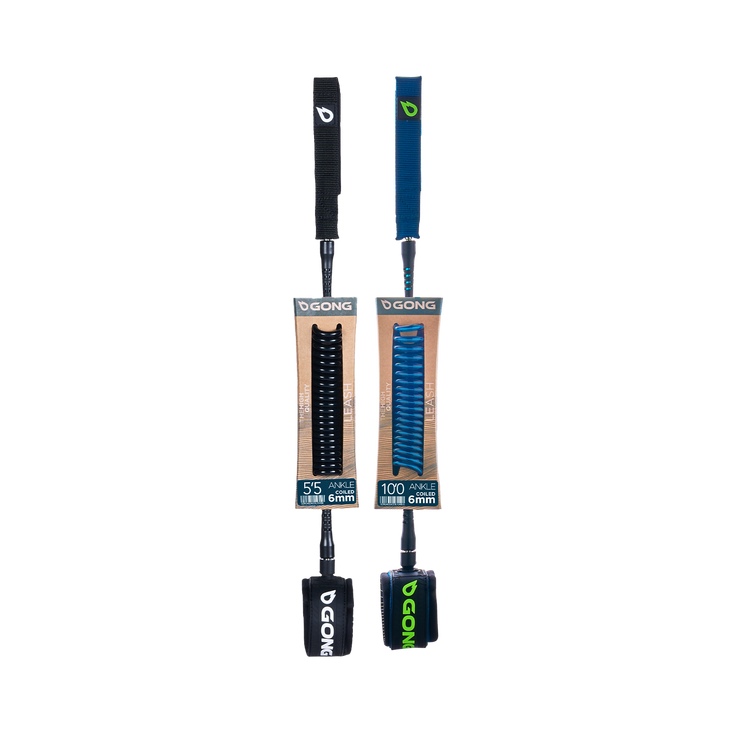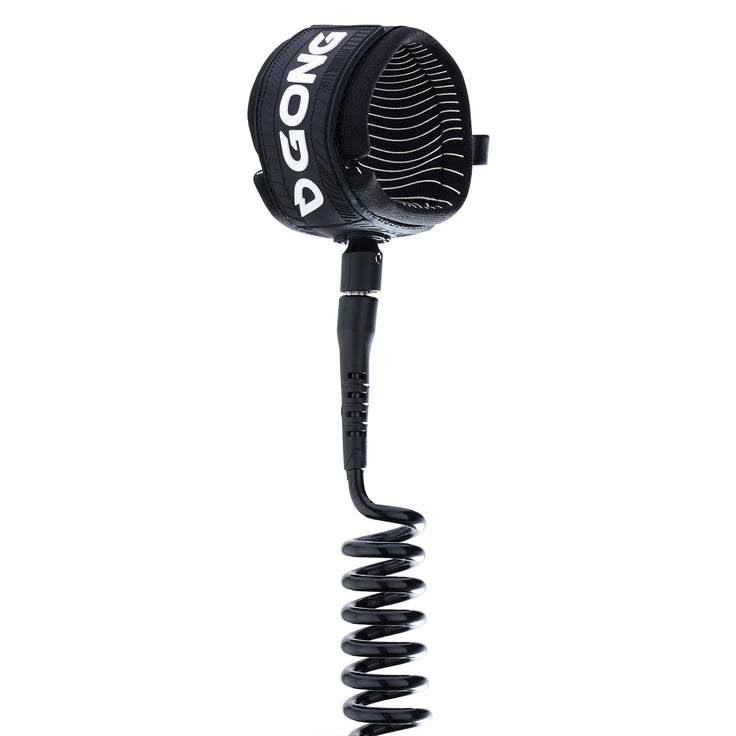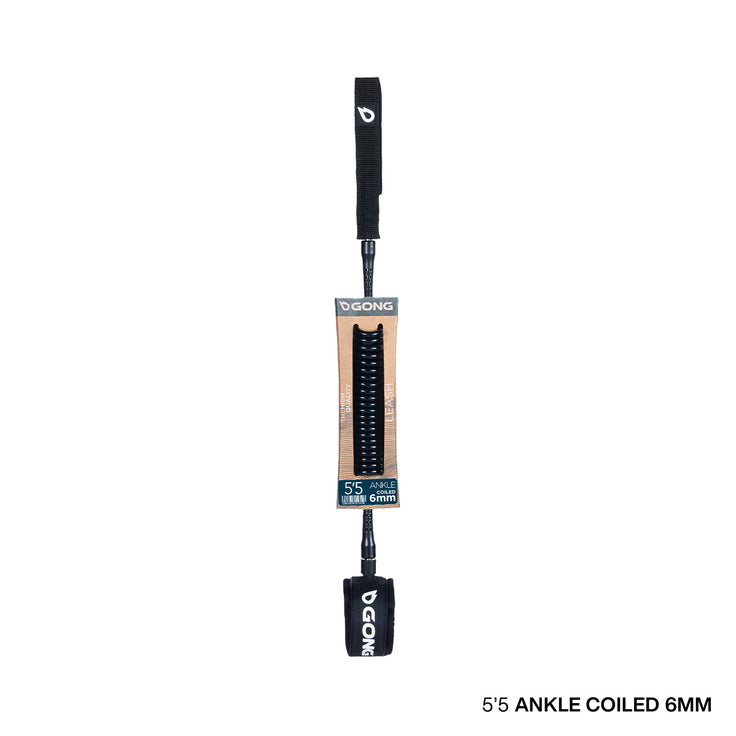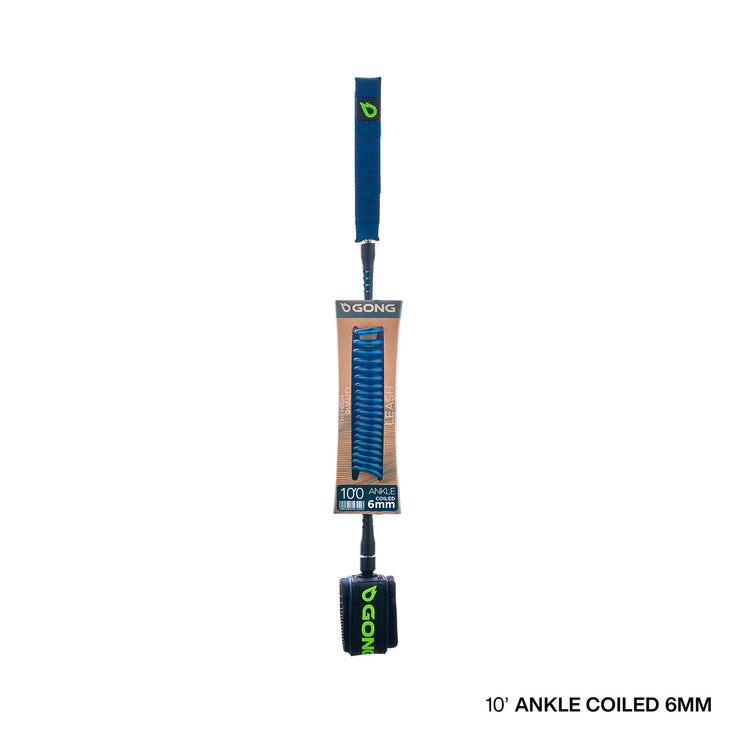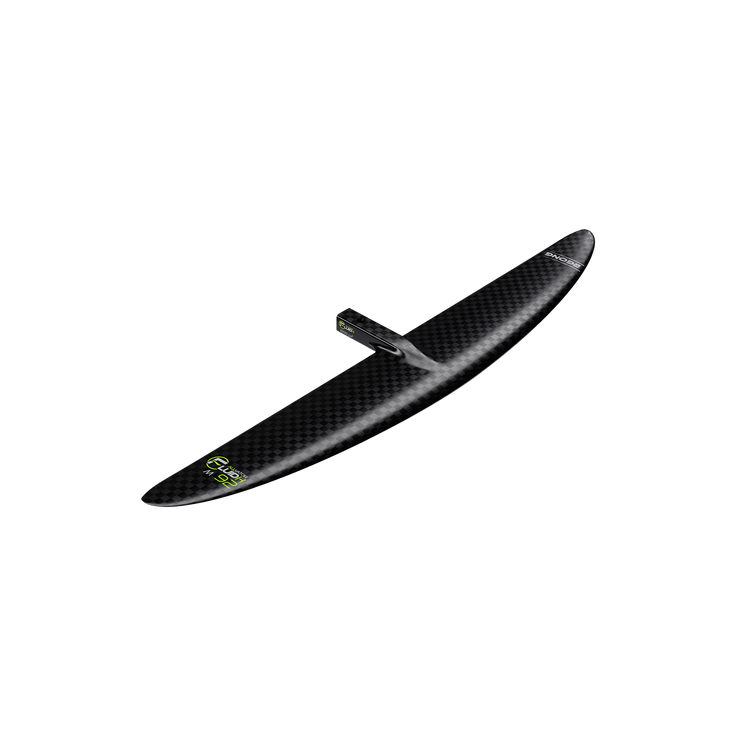INTERVIEW: ENDLESS FLIGHT ON A DOWNWINDER: MYTH OR REALITY?
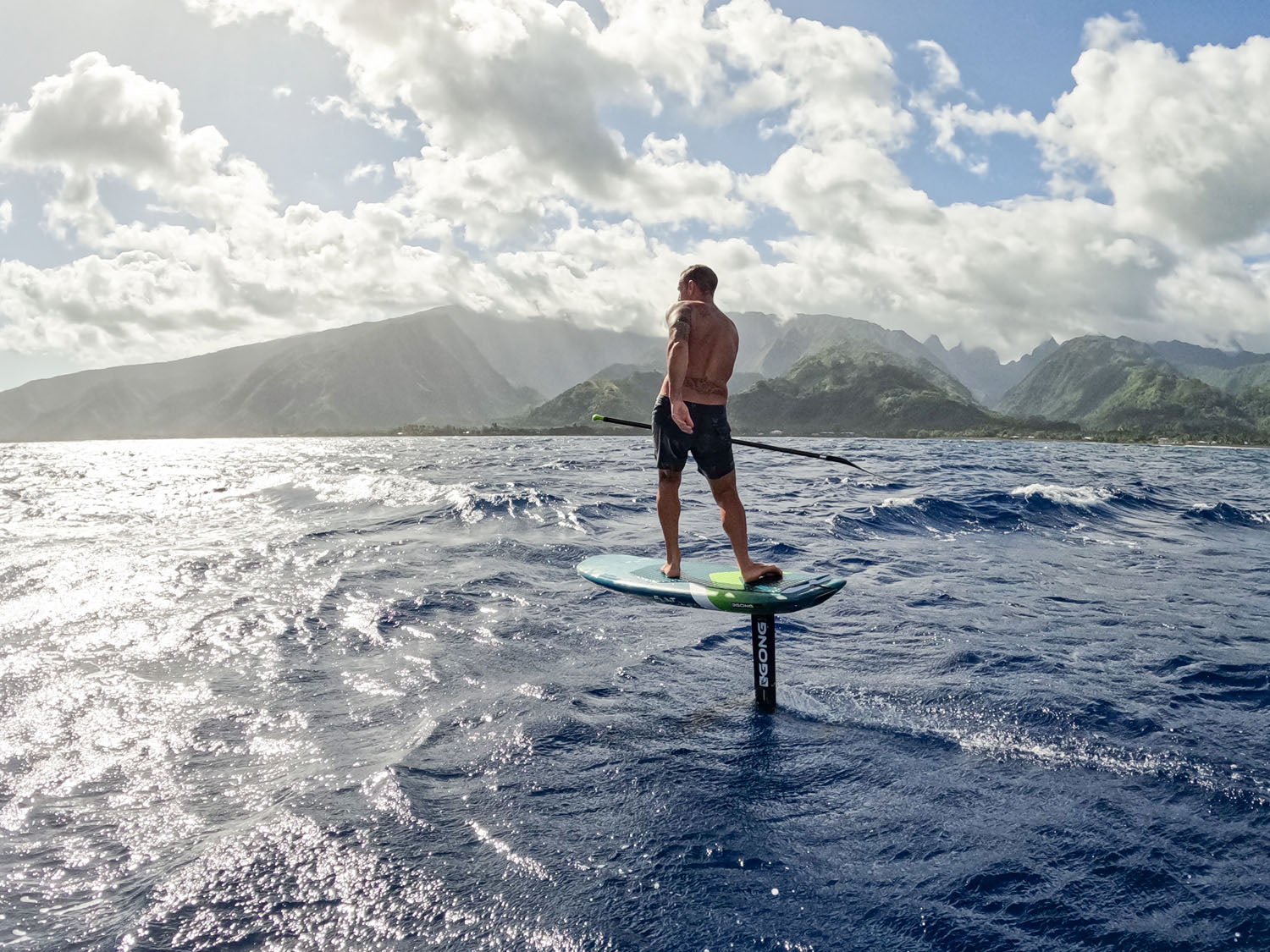
While a surf session often comes down to only a handful of waves, downwinders adepts share miles of thrilling rides on social networks. Yet, this practice, which seems incredibly fun, seems to be performed by only a lucky few.
We spoke to one of our team riders and big fan of downwinders, Mathieu Fouliard based in Tahiti, in order to demystify this stunning extension of board sports for the general public.
Hi Mat, how did you start downwinders and what are the basics to get into it?
To begin with, you should know that rowing here in Polynesia is a cultural thing and that people row from an early age. We all started on canoes, then SUPs arrived and, to come back to the subject, the downwinders on a SUP board before adding a foil to it. All these steps helped me for the most important thing, reading the swell, like a wing foiler or windsurfer can read the ripples on the water…
So I have a background that helped me a lot, but you don’t need to be in Polynesia to get started. I’d say that to start you should have legs and cardio that can take on a short session in very small waves. If you are able to pump 1 min on a surf foil without losing all your energy, controlling your cardio, you are ready to go offshore and anticipate flat parts between sets without a problem.
Wing foiling can also help you to understand the offshore swell in complete safety, but when you start to master the downwinders on a wing foiling gear, the wing soon becomes disabling with the wind speed throwing it in all directions.
Physically there’s no question about it, you need to be very dynamic, especially for the take off which takes a lot out of you. A downwinder on a surf foil is perhaps easier since you don’t have to manage the adequacy of the rowing and the pumping that you have in SUP foiling.
An experience in towed foiling (wing, kite or wake) is interesting but not enough, even if the goal is to limit pumping to a minimum by staying in the power zone of the swell, it will inevitably be necessary to catch swell trains by pumping with the foil. Dock starting is a good training that can help if you don’t have the opportunity to train in surf or SUP foiling.
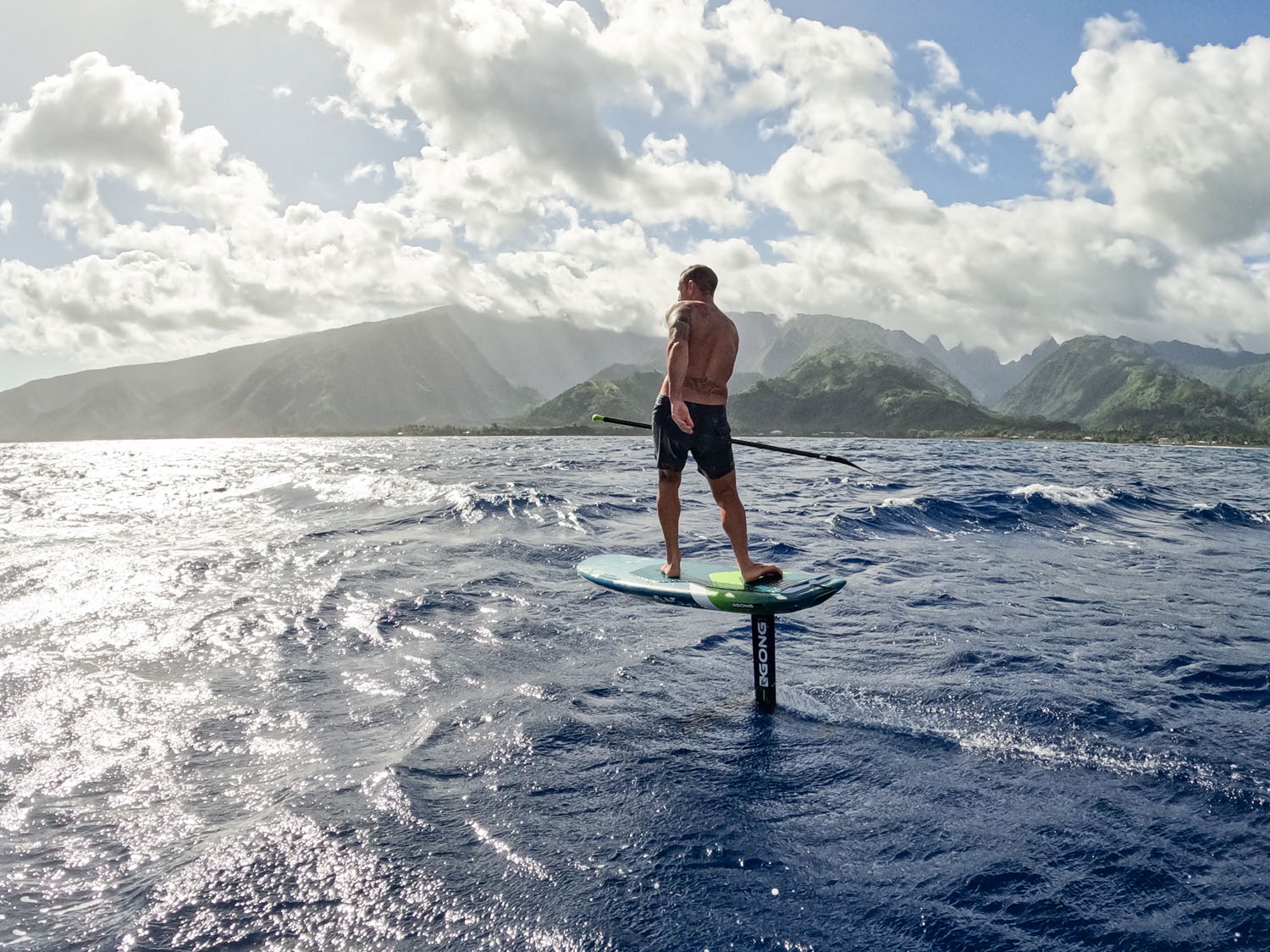
What can we really expect in terms of performance on the water?
In terms of performance it’s crazy and nothing is fake, we really fly forever, after your first downwinder on a SUP foil or a surf foil, you never come back to the canoe or SUPs. The speed is insane. So you have a new parameter to cope with. Too much speed can make you miss connections by losing contact with the power zone or get stuck on top of the swell bump in front of you. You need to anticipate more.
I can do a 10-mile run without losing flight. If I fall it’s only because I went for broke on a carve. With assistance or a SUP foil you can set off again. At the beginning you will often get stuck by replicating what you would do on a SUP Race or with a canoe, that is to say going in a straight line. In foiling you can go in all directions, 360 degrees, retrace your steps, stay on top of a bump, pass two bumps with the help of a paddle stroke in SUP foiling.
What are the right conditions for learning?
For the right conditions you need at least 15 knots to have a decent wind swell. Something with well formed bumps. Above all, no mix of swells, it’s a nightmare to manage. Contrary to what one might think, a nice groundswell without any wind as desired for surfing does not do the trick. Above all, you need a strong wind, it is a downwinder after all. If there’s wind, the needed wind swell quickly follows.
How is the first take off going?
In SUP foiling the start is rather simple but very demanding physically. It’s a matter of timing. When you see a small breaking wave, you should make the most of the suction phenomenon just behind/on top of it. Give it your all, be energetic, row and pump. But honestly if you have the right gear and the right conditions it’s super easy.
On surf foiling gear you need assistance to take off (a kite foil or a jetski) or a spot configuration that allows you to take off on a small foam, or even a beach start if you have the physical condition to pump for 10 minutes 😉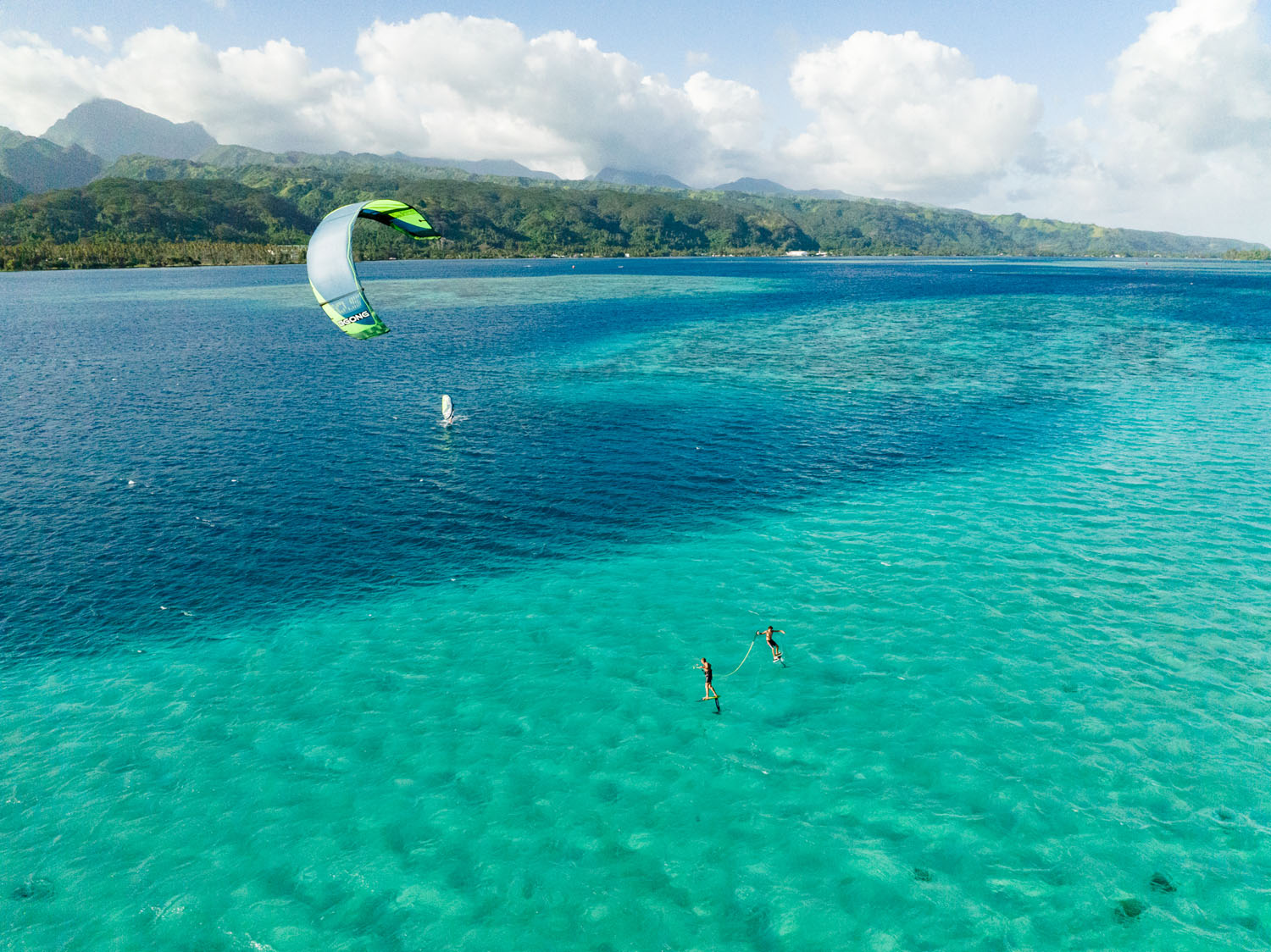
What is the right gear for learning and what gear do you use today?
You first need to develop your skills in small waves close to the shore. In surf foiling the Lance is great to start out with its paddling comfort. Then you need a tolerant foil that offers lift like the Rise or an X-Over. For SUP foiling, it is more progressive. You obviously need to be a good SUPer before you can SUP foil. Then you can start with a board that gives you confidence like the Zuma.
For SUP foiling I use the FLINT in 5’8 and the Fluid XXL-H for conditions of 20 knots, if more wind I switch to the Fluid L-H and I stay on a 70cm mast. I tested with an 85cm and I find that the start is much more physical, as if the foil lacked information to get out quickly.
When I do a downwinder on a surf foil, I use a kite foil board, the Catch. But only when I have the assistance of a jetski, for its minimal inertia. I use a classic surf foiling board if I want more safety in case I need to paddle..
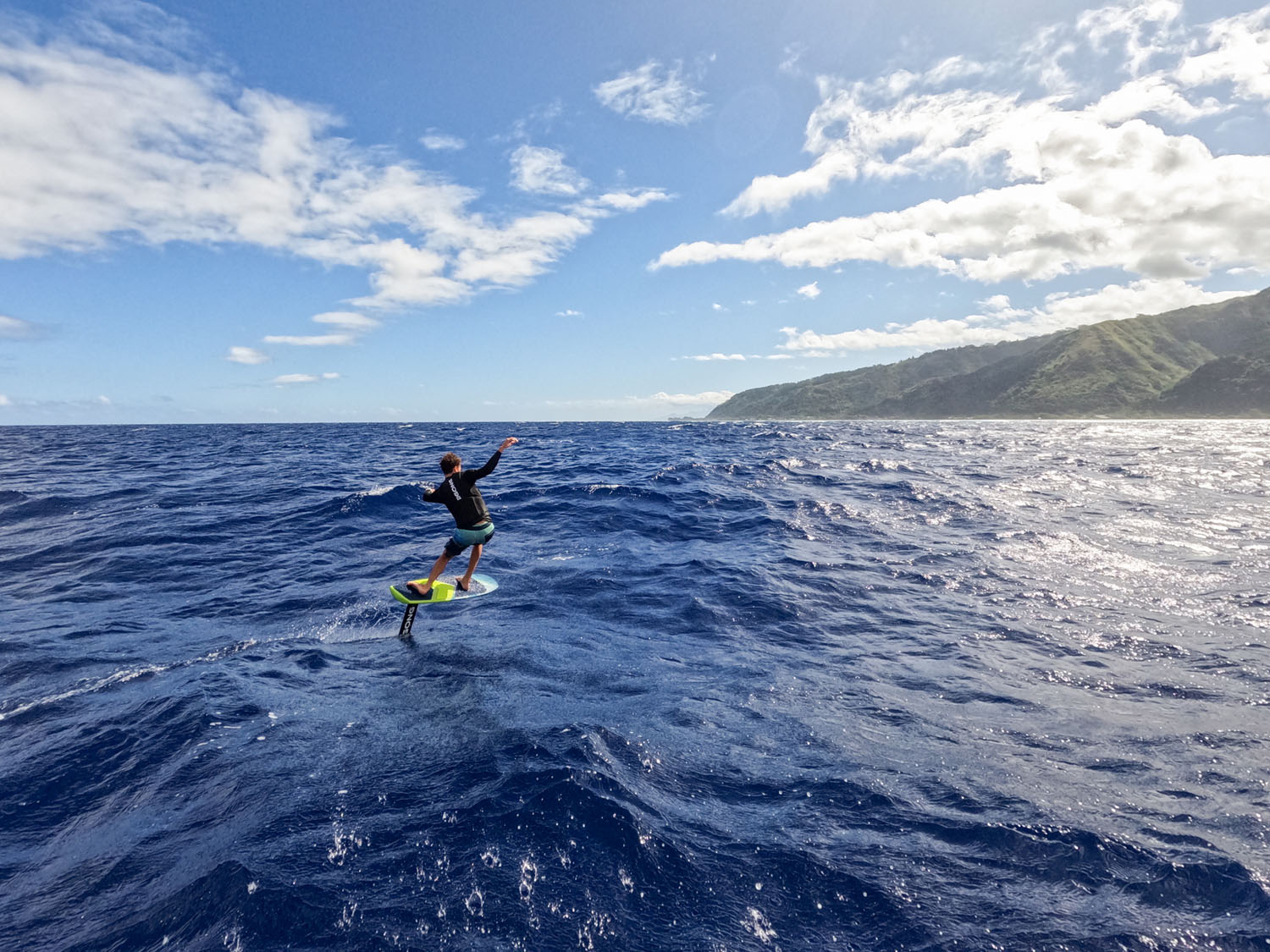
What does a classic downwinder look like?
The organization is rather simple where I live. With Hina my companion, we go out by a channel to reach the open sea and we enter by another one for the return to the lagoon, back to the starting point. On the east coast of Tahiti you can leave from the beaches, here at my place on the west coast, either you row for an hour to reach the open sea or you have a jetski for the safety and the pics of course.
My usual downwinder is 10 km long. I can do it three times in the afternoon with an average speed of 20km/h. Once flying, when the conditions are right and if you’re good at it you don’t have much to do. Even more so with the new foils like the high aspect H ranges, it’s even a sport where you tend to gain weight (lol). I was burning way more calories at the time I was doing SUP Race or canoeing.
What are the feelings on the water?
I have to say that the sensations are just amazing, you go really fast and an island seen from the sea is really something.
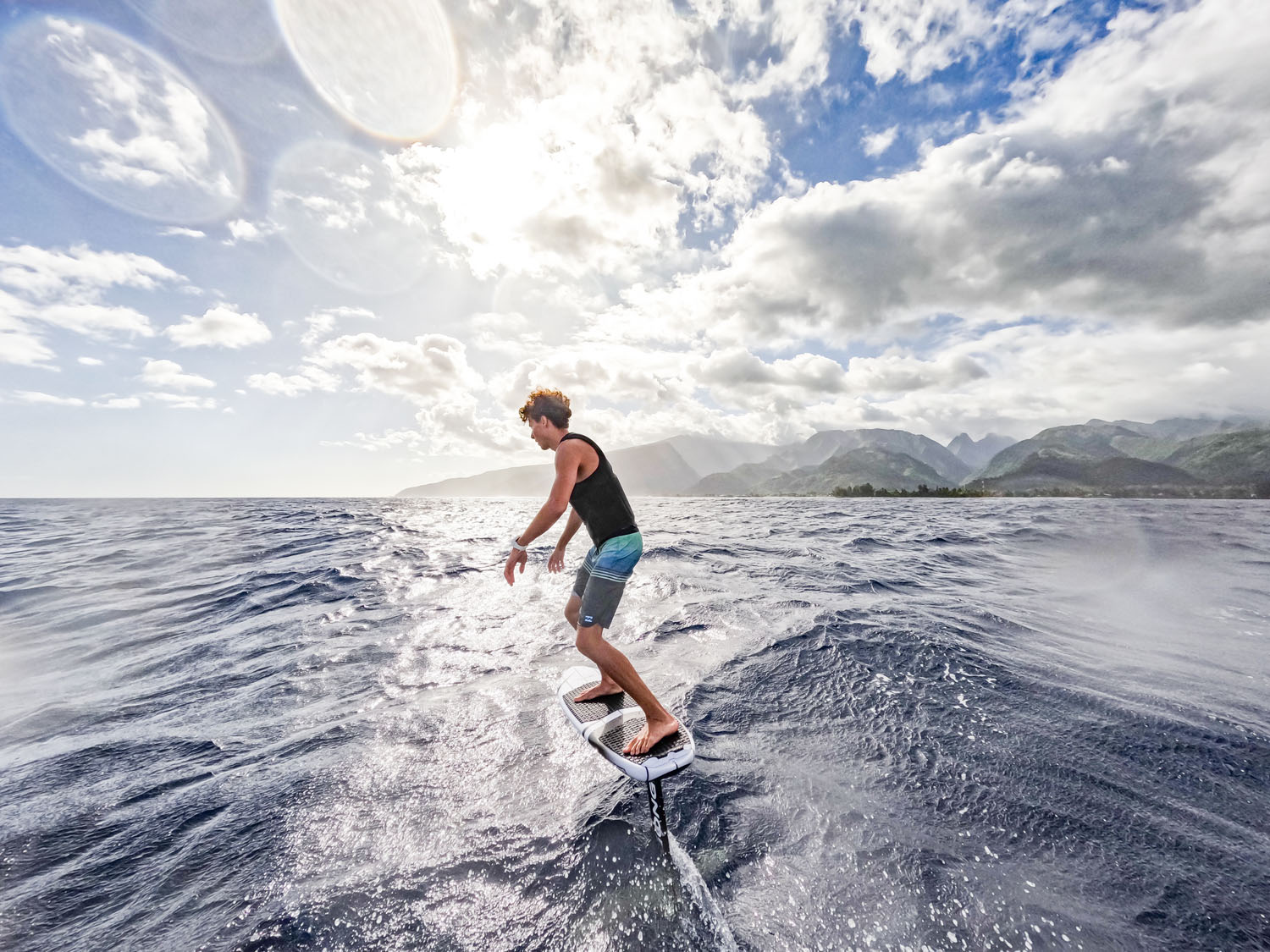
A last piece of advice?
Downwinders can not be improvised. It is essential not to do it on your own. Not just with anybody either. You should be with a team that knows what it is doing. Damaged equipment or an insignificant fall while surfing a beach break can take on very serious proportions if you are 800m from the shore.




